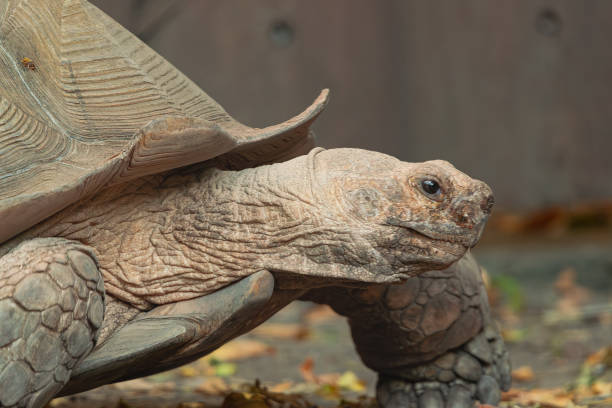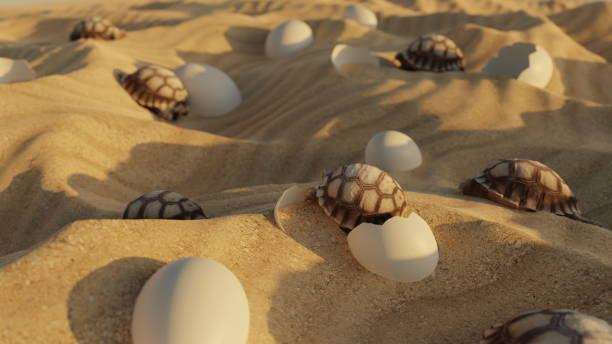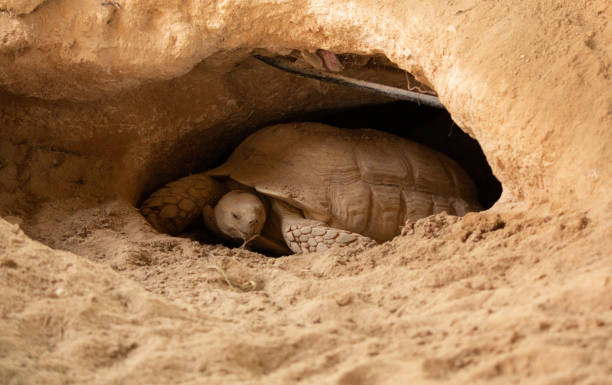Table of Contents
Scientific Classification
| Kingdom | Animalia |
| Phylum | Chordata |
| Class | Reptilia |
| Order | Testudines |
| Family | Testudinidae |
| Genus | Centrochelys |
| Species | Centrochelys sulcata |
| Scientific Name | Centrochelys sulcata |
Description
The African Spurred Tortoise (Centrochelys sulcata), also known as the Sulcata Tortoise, is the largest mainland tortoise and the third-largest tortoise species in the world. It is well-known for its impressive size, strong shell, and distinct spurred scales on its legs, which give it its name.
These tortoises have a sandy-brown or tan shell (carapace) that helps them blend into their arid surroundings. Their powerful, thick legs are designed for digging and traversing the harsh desert terrain. Males tend to be larger than females, with some individuals reaching lengths of 30 inches (76 cm) and weights of over 100 pounds (45 kg).

Distribution
The African Spurred Tortoise is native to the Sahel region of Africa, which extends across several countries, including:
- Chad
- Sudan
- Mali
- Niger
- Ethiopia
- Senegal
Though they are widely kept as pets around the world, their natural range remains in the dry regions of sub-Saharan Africa.
Habitat
These tortoises thrive in semi-arid and arid environments, primarily in:
- Grasslands
- Savannas
- Dry scrublands
Since they live in extreme temperatures, African Spurred Tortoises dig deep burrows (up to 10 feet deep and 30 feet long) to escape the heat and maintain moisture levels in their bodies..
Diet
As herbivores, African Spurred Tortoises rely on a plant-based diet consisting of:
- Grasses and Hay – Their primary food source.
- Leafy Greens – Such as dandelions, collard greens, and cactus pads.
- Succulents – Which provide hydration in dry conditions.
- Flowers and Weeds – Adding variety and essential nutrients.
They avoid high-protein foods, as excess protein can lead to shell deformities and health issues.
Behavior
- Solitary Nature – They are mostly independent but tolerate others in their vicinity.
- Burrowing – Essential for survival in hot climates, as it helps regulate body temperature.
- Territorial Disputes – Males may engage in head-butting and ramming to establish dominance.
- Docile Temperament – Despite their tough exterior, they are generally calm and can become quite friendly in captivity.
Lifespan
African Spurred Tortoises have an impressive lifespan, often living 50 to 100 years in the wild and captivity. With proper care, some individuals have even surpassed the century mark.
Reproduction and Lifecycle
- Mating Season – Occurs in the cooler months after the rainy season.
- Egg Laying – Females lay between 15 to 30 eggs in a carefully dug nest.
- Incubation Period – Eggs hatch after 90 to 120 days, depending on temperature conditions.
- Hatchlings – Start as tiny tortoises measuring around 2 inches (5 cm) but grow rapidly with proper nutrition.
- Maturity – Reached around 15 years of age, depending on environmental conditions.

Predators
While adult African Spurred Tortoises have few natural predators due to their large size and hard shell, young tortoises are vulnerable to:
- Foxes
- Jackals
- Monitor Lizards
- Snakes
- Birds of Prey
Human activity, including poaching and habitat destruction, poses the greatest threat to their population.
Adaptations
African Spurred Tortoises have developed several adaptations to survive harsh desert conditions:
- Burrowing Ability – Provides relief from extreme heat and conserves moisture.
- Thick, Scaly Skin – Reduces water loss and offers protection against predators.
- High Fiber Diet – Helps them extract moisture from plants.
- Hard Carapace – Offers protection from attacks and environmental hazards.
Conservation Status
The African Spurred Tortoise is classified as Vulnerable on the IUCN Red List due to habitat destruction and illegal pet trade.
Threats:
- Overgrazing – Competition for food with livestock.
- Illegal Pet Trade – Hatchlings are frequently sold as exotic pets.
- Climate Change – Altered weather patterns affect food availability.
- Poaching – Although not commonly hunted for food, some populations are at risk.
Conservation Efforts:
- Breeding Programs – Aimed at increasing population numbers.
- Habitat Protection – Preserving natural areas from destruction.
- Education Campaigns – Raising awareness about responsible pet ownership.
- Wildlife Laws – Implementing stricter regulations on illegal trade.
Conclusion
The African Spurred Tortoise is a remarkable species, built to endure some of the toughest environments on Earth. With its resilience and adaptability, it continues to thrive in both the wild and captivity. However, human activities pose a significant threat to its survival. Through conservation efforts and responsible stewardship, we can ensure that these gentle giants continue to roam the deserts and savannas for generations to come.



